As a sports medicine and ergonomics health care practitioner, who just had a hip replacement, I have some useful advice rarely given by the surgeon’s office. When it comes to the operation, my surgeon, staff, and PT’s have been terrific and I’m very happy with the results. That said, several items made post op easier for my hip replacement and I’m sure they will do the same for you. Some are must haves and others are highly advisable.
Must Haves
Generally, devices that help the weakened post op hip muscles and lack of range of motion are extremely useful. Here are some essentials that help in this way.
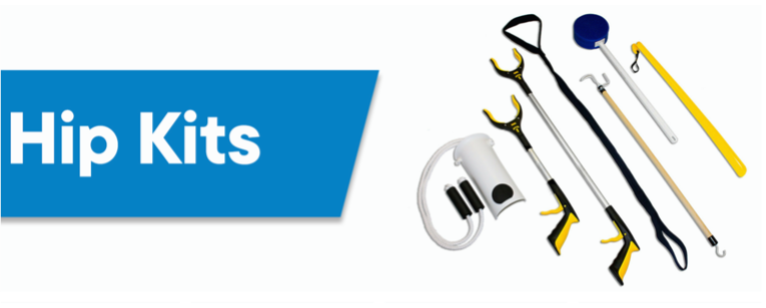
This deluxe hip kit has been invaluable. You will not be able to reach much below your knees for weeks so the Sock Aid and Reachers are key. You will also find the Leg Lifter essential to moving a leg which has little hip flexor strength, especially in bed. The longer Shoe Horn is nice but not necessary, IF you get a pair of SLIP IN SKETCHERS. This is THE most necessary use of their patented “built in shoe horn”! Size them correctly at a store if possible. The Sock Aid takes a bit of practice and note that it is NOT designed for most compression socks.
At some point, a cane will become essential for movement without a walker or Rollator. The cane adds walking security while balance is a challenge and stair railings need opposite side support.
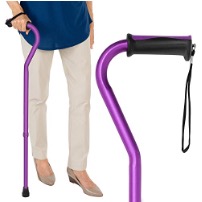
Going down, bad leg first. Going up, good leg first. The at-home PT’s say “bad leg to hell, good leg to heaven”. Your cane should be sized to your height (the one pictured is adjustable). Notice that the handle is ergonomically easier when the handle is horizontal.
Though both are essential, generally Medicare will pay for a cane or walker, but not both!
HIGHLY ADVISED
Going down to get into bed is the easy part. Getting out of a lower bed is the challenge.
A higher bed makes it easier is to slide off and stand comfortably with less hip angle.
Pedestals are not that expensive, easy to assemble, and provide storage space below (as pictured).
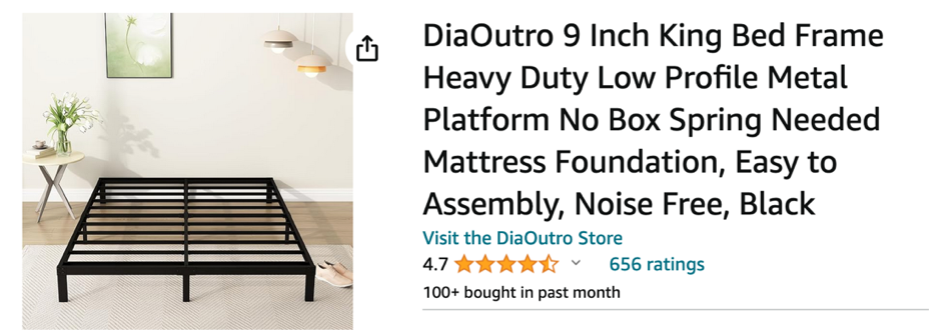
Better than a walker (see below), a Rollator provides a mobile seat and a way to safely get smooth walking exercise without lifting. It’s pouch also provides a place to keep hip kit devices and a thermos nearby.
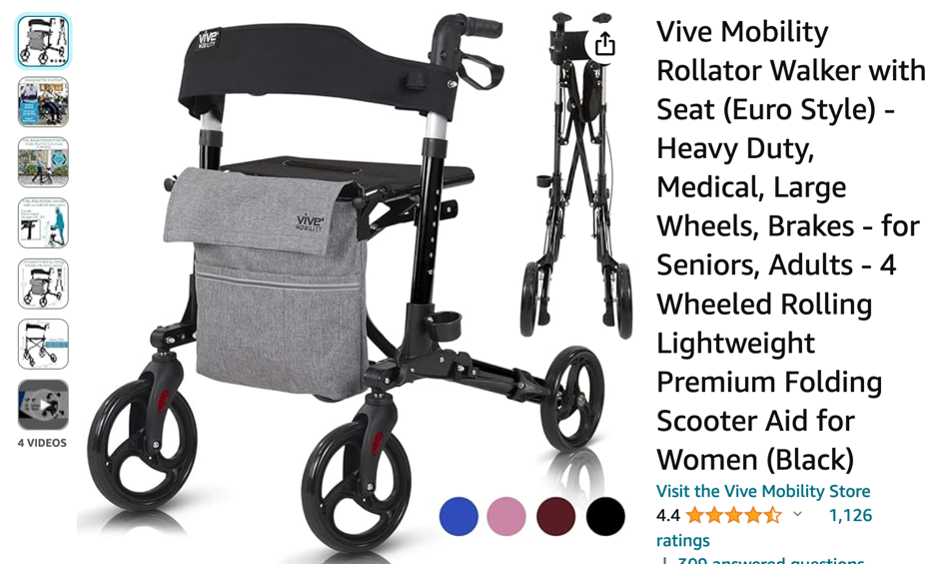
The thermos is useful because anti-inflammatories, and pain medications are dehydrating so extra fluids will be needed. They are also usually constipating, which I controlled nicely with figs instead of more medications. You will be lying down on your back a lot, so a back scratcher was another good accessory for the rollator pouch.
Three inches may not appear to be much in the next item but, for an uncomfortable post op hip with limited range of motion, it can be enormously valuable. Even more important if your toilet seat height is standard instead of ADA height which is only about a 2 inch difference. The built in arm rests help control sitting and standing motions while the hip is uncomfortable. I like this model a little better than the floor standing models, though an argument can be made for the extra stability/removal of those.
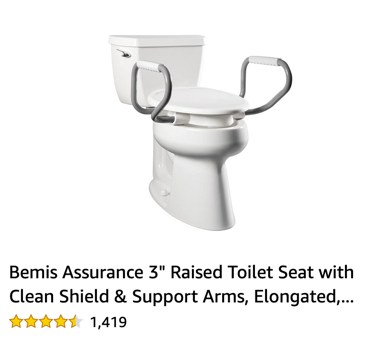
Fall Risk
Balance challenges and post op medications raise the risk of falls. The author had a fall, which luckily did not harm the procedure, and I know more than most to be cautious, so please be on your guard here. Stairs and inclines pose a more serious threat in post op than at any other time so use handrails and cane. Here’s one of my top recommendations for your post op rehab and general exercise needs.
Water Exercise
Typically, Medicare will include the procedure, at home PT, and at location PT to guide you to full range of motion, balance, and gait analysis as you get used to using the new joint. When the incision is properly healed and has no remaining scabs, get your doctor’s permission to exercise in a pool. PT’s are terrific but were not trained in proper water routines in school.
By giving you buoyancy, water removes much of the weight bearing that normally passes through the new joint. Balance issues are much easier to address as the water provides a liquid cushion, safety net, and vertical reference. Remember to test your balance also with eyes closed on one foot for 10 seconds. IMPORTANT: There is no need to be a swimmer, or even get your hair wet, to exercise comprehensively in water, whether you are post op or not!
A pool is liberating in terms of accessing muscles/tendons without stressing joints. In this situation, it is useful to have a free “Silver Sneakers” membership at a pool facility near you. Check with your insurance provider and Medicare. With frequent use, skin can get sensitive to pool chemicals so be sure to rinse off or shower with soap right away. Skin lotions after that are a wise addition to your routine.
What exercises should I do in water? As they say on MSNBC, “Watch this space”.

 Illustration By Moron Eel
Illustration By Moron Eel